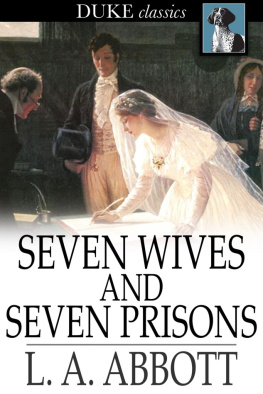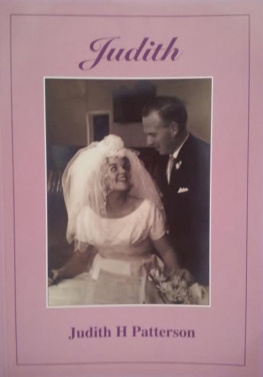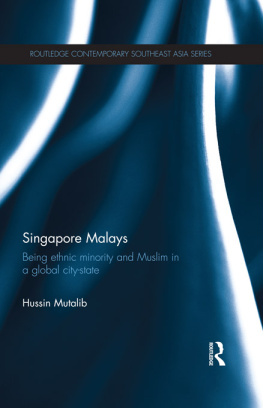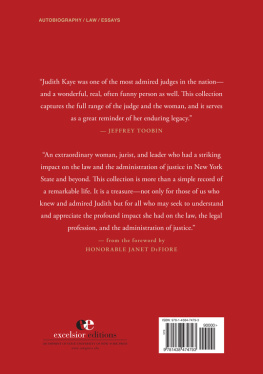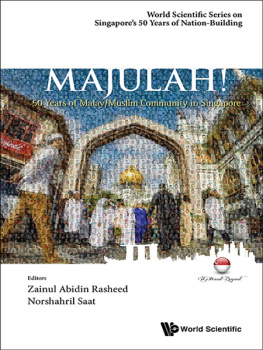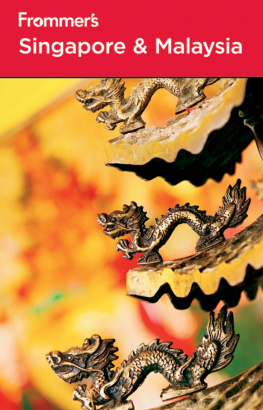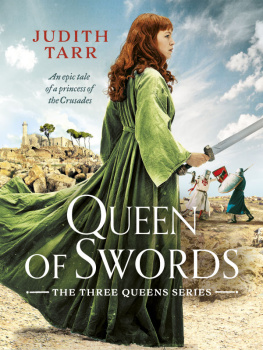THE MUSLIM MATRIMONIAL COURT IN SINGAPORE
LONDON SCHOOL OF ECONOMICS MONOGRAPHS ON SOCIAL ANTHROPOLOGY
Managing Editor: Charles Stafford
The Monographs on Social Anthropology were established in 1940 and aim to publish results of modern anthropological research of primary interest to specialists.
The continuation of the series was made possible by a grant in aid from the Wenner-Gren Foundation for Anthropological Research, and more recently by a further grant from the Governors of the London School of Economics and Political Science. Income from sales is returned to a revolving fund to assist further publications.
The Monographs are under the direction of an Editorial Board associated with the Department of Anthropology of the London School of Economics and Political Science.
THE MUSLIM MATRIMONIAL COURT IN SINGAPORE
JUDITHDJAMOUR
LONDON SCHOOL OF ECONOMICS MONOGRAPHS ON SOCIAL ANTHROPOLOGY
Volume 31
First published 2004 by Berg Publishers
Published 2020 by Routledge
2 Park Square, Milton Park, Abingdon, Oxon OX14 4RN
605 Third Avenue, New York, NY 10017
Routledge is an imprint of the Taylor & Francis Group, an informa business
Judith Djamour 2004
All rights reserved. No part of this book may be reprinted or reproduced or utilised in any form or by any electronic, mechanical, or other means, now known or hereafter invented, including photocopying and recording, or in any information storage or retrieval system, without permission in writing from the publishers.
Notice:
Product or corporate names may be trademarks or registered trademarks, and are used only for identification and explanation without intent to infringe.
ISBN 13: 978-1-8597-3879-5 (hbk)
ACKNOWLEDGEMENTS
The fieldwork on which this book is based was financed by a grant from the London Committee of the London-Cornell Project for the Study of Chinese and South-East Asian Societies.
I am profoundly grateful to Inche Ahmad Ibrahim, State Advocate-General, Singapore, for permission to study the files and records of the Shariah Court and of the Registry of Muslim Marriages and Divorces. I had several discussions with him, during which he clarified many aspects of the legislation affecting Muslims. Tuan Haji Mohamed Sanusi, Registrar of Muslim Marriages and President of the Shariah Court, answered my numerous enquiries with unfailing courtesy and patience; he also kindly gave me desk space. Tuan Haji Mohamed Salleh, Acting Chief Kathi, Tuan Haji Ismail, Kathi at the Shariah Court, and all the other officials of the Court and of the Registry helped me in many ways. I also benefited from informal talks with Mrs M. Siraj, Muslim Social Case Worker.
I am grateful to Miss Jean Robertson and Mrs Ann Wee of the Social Studies Department, University of Singapore, to Miss M. Menon of the Women and Girls' Welfare Section of the Department of Social Welfare, to Mr Arul of the Sixth District Court, and to Mr E. H. D'Netto of the Legal Aid Bureau.
My old friends, Mr and Mrs Tan Yeok Seong and Mr and Mrs Teh Cheang Wan, gave me much practical help and offered me frequent hospitality.
Professor J. N. D. Anderson, Professor Raymond Firth, and Dr Paul Stirling read an early draft of this book; Dr Burton Benedict read the final draft. They made comments and suggestions from which I greatly benefited. My husband read the early and final drafts with care and patience and I am deeply indebted to him for his constructive criticisms and for his encouragement.
December 1964 J.D.
I spent two years in Singapore (1949 and 1950) engaged in field work on the structure of Malay kinship and marriage. My interest soon became focused on the instability of marriage: over several decades the Muslim divorce rate had been about fifty per cent. Singapore Muslims are not exclusively Malay; there are Indians and Pakistanis as well as Arabs, but my study was almost wholly concerned with Malays. (I use the term to cover Malays who had been settled in Singapore or the Malay Peninsula for several generations, and more recent immigrants from Indonesia.) Malays are by far the largest single Muslim group in Singapore.
In 1949 and 1950 several Muslim leaders were expressing concern at the high divorce rate, and at public meetings as well as in the English and Malay press several factors were said to be responsible for frequent divorce: forced marriages; the youth and inexperience of many Muslim brides; disparity in the ages of the spouses; ease of repudiation; and lack of an official conciliation machinery. On the other hand, no Muslim seriously advocated that Western practices of courtship be followed, that young girls should be allowed the freedom to go out with the men of their choice, or that they should select their own husbands; reformers only urged that parents exercise greater care in arranging the marriages of their children and that they consider seriously a prospective groom's or bride's objection to a marriage partner.
Several Muslim women's associations were formed with charitable and feminist aims, but most of them were short-lived. Their committee members generally lacked financial resources and administrative skills, and the initial enthusiasm of the majority of their ordinary members quickly waned. Some of these associations had hoped to provide practical help and advice to women abandoned by their husbands. When a Malay woman was divorced she usually retained the custody of the young children of the union and also became in practice responsible for their support. She could sue the father for their maintenance but rarely did so. Her close kin often helped her to care for the children, but if they could not or would not help and if she was unable to earn enough money herself, she might give the children away in adoption as a last resort. The Social Welfare Department of the Colony had provisions for public assistance, but in 1950 few Malays were aware that they could apply for such help.
In my Malay Kinship and Marriage in Singapore I noted:
London School of Economics Monographs on Social Anthropology, No. 21, London, 1959, p. 140.
Phrases such as 'the sanctity of the home', 'the sacred, bond of marriage' or the moral and emotional content they carry, have no equivalent in Singapore Malay culture. No such expressions are used, and certainly the bond of marriage is not considered sacred. I saw no evidence of great moral pressure being exercised by kathi or by religious teachers to dissuade wives from claiming a divorce or husbands from pronouncing it. In the few cases where a woman had been living for many years with her first husband, her pride in the fact appeared to be due as much to the chastity and equanimity which were implicit in her not having sought other unions, as to the triumph of a woman who had achieved a feat rare in her community. This does not mean that the majority of Malays view the dissolution of marriage with total unconcern, only that they accept the situation with resignation.
Singapore Malays above all value harmony in personal intimate relationships. When a marriage union fails to produce even a small measure of emotional contentment and causes strife and anxiety, they find divorce the most obvious solution to their problem. Material considerations, such as economic security, are usually of secondary importance.




